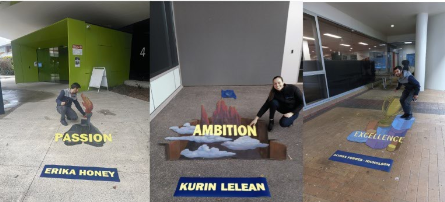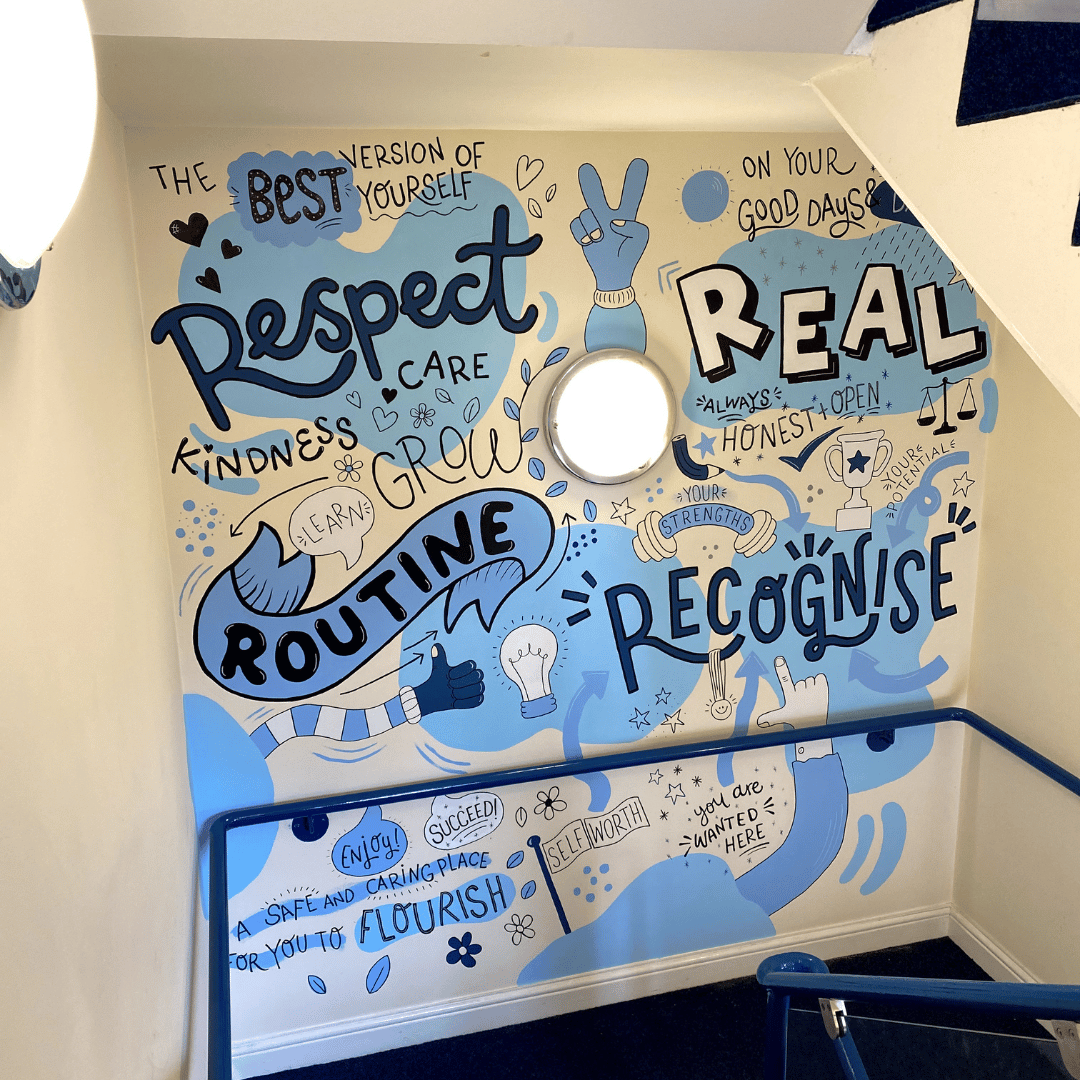
Educational Murals: Transforming Learning Spaces into Canvases of Creativity and Inspiration
Envision your school, college, or university not just as a place of learning but as a canvas of endless possibilities. This transformative vision is embodied in the concept of educational murals – art that transcends mere decoration to become a pivotal part of the educational experience. In this comprehensive exploration, we delve into the world of school murals, college murals, university murals, murals for kids, and learning murals. We aim to illustrate their types, necessity, benefits, and the process of bringing them to life in your educational space.
Understanding Educational Murals
Defining Educational Murals: Educational murals, encompassing school murals, college murals, and university murals, are large-scale artworks designed to inspire, educate, and transform learning environments. From murals for kids in elementary schools to intricate learning murals in higher education institutions, these artworks serve as visual stimulants and educational aids.
Varieties of Educational Murals:
- Historical Murals: Bring history to life on the walls of your institution.

An Art By Lautaro Musse - Literary Murals: Celebrate literary giants and famous scenes, fostering a love for reading.
- Scientific and Mathematical Murals: Simplify complex concepts through visual representation.
- Inspirational and Motivational Murals: Boost morale and encourage students.
- Cultural and Diversity Murals: Reflect the rich tapestry of global cultures and ideas.
- Environmental and Nature Murals: Promote awareness and responsibility towards our planet.
The Imperative of Educational Murals

In a world where visual learning is increasingly dominant, school murals, university murals, and learning murals play a vital role. They provide a vibrant backdrop to everyday learning, acting as tools to:
- Enrich the Learning Atmosphere: Transforming spaces into hubs of creativity and thought.
- Stimulate Creativity and Critical Thinking: Offering visual stimuli that ignite imagination.
- Cultivate Community and Belonging: Reflecting the values and identity of the institution.
- Serve as Educational Aids: Facilitating the teaching of complex ideas visually.
The Advantages of Integrating Murals in Educational Settings

- Visual Appeal: Enhance the aesthetic of learning spaces.
- Student Engagement: Create an environment that captivates and retains attention.
- Educational Enhancement: Utilize murals as unconventional and effective teaching tools.
- Promotion of Institutional Values: Embody the spirit and ethos of your institution through art.
- Well-being and Mood Improvement: Bright, engaging murals can uplift spirits and reduce stress.
Partnering with Artists for Mural Creation
Selecting the Right Artist: The key to a successful mural project lies in finding an artist who is not only skilled but can understand and translate your educational goals into art.
The Process:

- Initial Consultation: Share your vision and objectives with the artist.
- Design Phase: Review and approve the artist’s sketches and concepts.
- Preparation Stage: Choose appropriate materials and prepare the mural site.
- Artistic Execution: Watch as the artist brings the concept to life.
- Celebratory Unveiling: Introduce the mural to the community in a special event.
Exemplary Educational Murals
- A Walk Through History: A high school in Texas adorned its walls with a mural depicting pivotal moments in American history, creating a living timeline.
- Literary Journeys: An Oregon college library features a mural showcasing iconic literary scenes, igniting a passion for reading.
- Stellar Science Exploration: A California middle school’s science lab is enveloped in a galaxy-themed mural, making each class a cosmic adventure.
How Book An Artist Elevates Educational Murals
Book An Artist serves as a bridge between visionary Schools, colleges and art that inspires students. With an extensive roster of artists specializing in various styles, communities can find the perfect artist to bring their vision to life. They streamline the process, from conceptualization to the final stroke of the brush.
Conclusion
The incorporation of school murals, college murals, university murals, murals for kids, and learning murals in educational settings transcends traditional art. These murals are not just decorations but are vital components of the educational environment, fostering intellectual and emotional growth. By partnering with the right artist, your educational institution can transform its walls into vibrant sources of motivation, learning, and inspiration.
Check out top-rated local artists near you!
Are you an artist ? Sign Up










